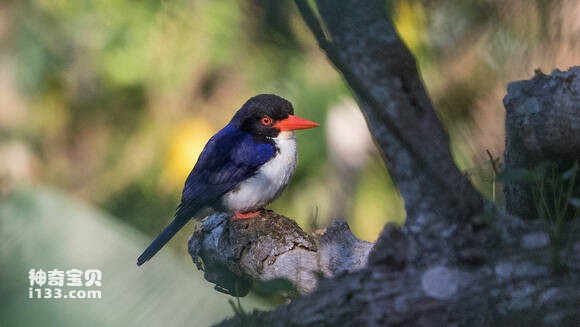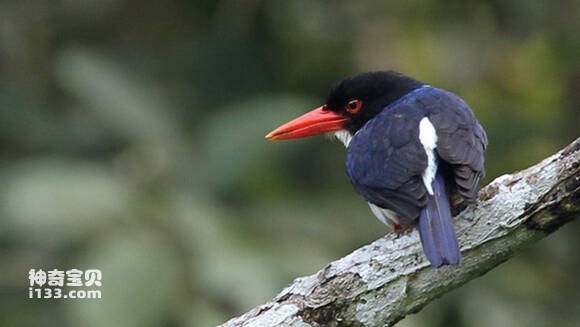Caridonax fulgidus
IUCN
LCBasic Information
Scientific classification
- name:Caridonax fulgidus
- Scientific Name:Caridonax fulgidus,Glittering kingfisher
- Outline:Climbing birds
- Family:
Vital signs
- length:About 30 cm
- Weight:No textual research information is available
- lifetime:No textual research information is available
Feature
Distribution and Habitat
The white-waisted emerald lives in tropical rainforests and can be found from coastal areas up to 1,300 meters high.
Appearance
White waist jade body length 30 cm. Male and female are similar. The forehead, crown, back, neck, eyes, cheeks and occipital neck are all bright deep purplish blue. The back and shoulder blades appear blue-purple. The thorax and the tail are white with a pearly luster. The tip of the tail is dark blue. The mouth is red. The iris and eyes are orange. The legs are orange.
Young birds resemble adults. But the upper body is less shiny. Light yellow or red on the abdomen and sides. The breast feathers are grayish brown. The mouth color is different yellow-orange. Iris is light brown.
The mouth is thick and long like a chisel, the base is wider, the mouth peak is straight, the peak ridge is round, there is no nasal groove on both sides; Wing circle, the first primary feather is equal or slightly shorter than the seventh primary feather, and the second, third, and fourth are nearly equal in length; Primary feather base with white spots; The tail is round.
White-waist jade is a monoty
Details
Glittering kingfisher The Glittering Kingfisher emerald has two subspecies and its scientific name is Caridonax fulgidus.

White waist jade is generally alone or lovers to hunt together. Like most forest kingfishers, they are completely carnivorous. Often searching for prey in leaves or dirt. The main diet is invertebrates such as crickets, spiders, scorpions, and snails. It also eats small vertebrates such as small fish, small snakes and lizards.

The spawning period in Flores from January to March; In Sumbawa from February to March. The female lays one or two eggs at a time. The nest is built on the earth cliff or on the embankment of the river, and the nest is dug in the tunnel type cave with the mouth, which is 60 cm deep, 20 cm wide, 10 cm high and long. These caves are generally bare of bedding. The eggs are laid directly on the nest ground. Oval, pure white, about 29.4×26.2 mm in size.
Listed on the International Union for Conservation of Nature (IUCN) Red List Protection Level: Not Threatened (LC).
Protect wild animals and eliminate wild meat.
Maintaining ecological balance is everyone's responsibility!








